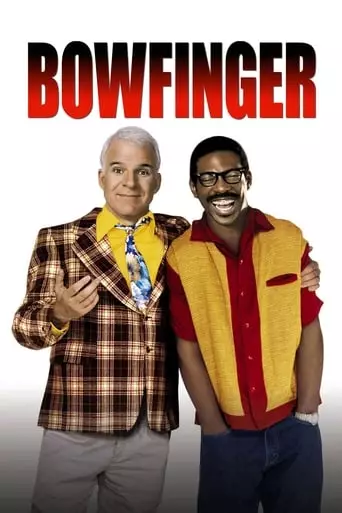
On the verge of bankruptcy and desperate for his big break, aspiring filmmaker Bobby Bowfinger concocts a crazy plan to make his ultimate dream movie. Rallying a ragtag team that includes a starry-eyed ingenue, a has-been diva and a film studio gofer, he sets out to shoot a blockbuster featuring the biggest star in Hollywood, Kit Ramsey — only without letting Ramsey know he’s in the picture.
Bowfinger (1999) is a clever comedy directed by Frank Oz, starring Steve Martin as the titular character, Robert Bowfinger, a struggling Hollywood director, and Eddie Murphy in dual roles as Kit Ramsey, a delusional action star, and his nerdy brother, Jiff. The plot centers around Bowfinger’s desperate attempt to make a film with no budget or resources. His idea is to film Kit Ramsey in a movie without the actor’s knowledge, capitalizing on the star’s paranoia and delusions. Bowfinger convinces Jiff, Kit’s clueless brother, to serve as a body double, creating hilarious situations along the way. The film’s narrative satirizes Hollywood’s obsession with fame, manipulation, and the absurdity of filmmaking.
At its core, “Bowfinger” explores themes of ambition, deception, and the lengths people will go to achieve success in the entertainment industry. Bowfinger’s hustle is a comedic reflection of the desperation that often accompanies show business. The film’s portrayal of Kit Ramsey is a satire on the fragile egos and exaggerated personas of celebrities, mocking how their careers can be built on superficial qualities rather than talent or hard work. The dynamics between the characters also showcase the contrast between Hollywood glamour and the gritty, resourceful underbelly of the film industry, where dreams are often made on the fringes of reality.
The movie is a satire of celebrity culture and Hollywood’s artificial nature, with its most biting commentary focused on the ways that filmmakers, agents, and even actors themselves create illusions for the sake of success. The mockery of star power and the lengths to which people will go to achieve fame without regard for ethics or truth is a central critique. Moreover, the film’s play with the idea of manipulation – both of the stars and the audience – highlights the blurred lines between what is real and what is manufactured in the movie business.
“Bowfinger” was successful both critically and commercially. It served as a commentary on the movie industry itself, poking fun at the often absurd lengths to which filmmakers will go for success. The film’s humorous exploration of these themes, combined with strong performances, particularly from Eddie Murphy (playing dual roles), earned it positive reviews. It stands out as a clever Hollywood satire that takes a jaded yet lighthearted approach to the pursuit of fame and recognition in the industry.
The film also highlighted Steve Martin’s writing and comedic talents, further solidifying his place as one of Hollywood’s finest comedic minds. It was seen as a return to form for both Martin and Murphy, offering audiences a refreshing break from the more cynical or gross-out comedies dominating Hollywood at the time.
After watching “Bowfinger,” you will likely feel a mix of amusement, empathy, and a bit of awe at the resilience of the characters. The film is filled with absurd humor, yet it also has a heartwarming undercurrent. You may feel a sense of satisfaction from seeing characters who, despite all odds, manage to achieve their goals in the most unconventional ways. The blend of laughter with moments of genuine affection for the characters will leave you with a smile. The film’s lighthearted tone offers an escape from the usual complexities of the entertainment world, allowing you to enjoy its commentary on fame and the movie-making process without feeling burdened by the seriousness of the subject matter.
In essence, “Bowfinger” is a hilarious and insightful commentary on Hollywood’s inner workings, wrapped in a film that will leave you laughing and reflecting on the nature of ambition, deception, and the quest for fame.
